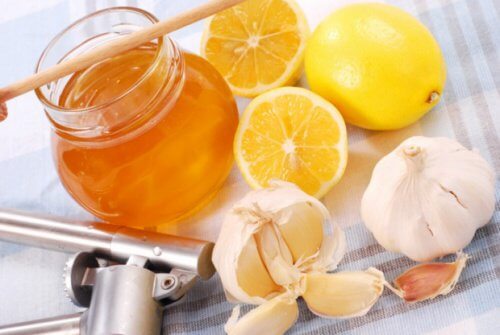The 5 Best Natural Antibiotics and How to Use Them
Antibiotics continues to be a vital support in medicine. However, recent studies have shown that prescribing them in excess can be dangerous to our health. In fact, it can create a resistance to different types of bacteria, in particular in children and babies. For that reason we’re bringing you the 5 best natural antibiotics which can, in some cases, be a valid option for treatment.
The excessive use of antibiotic drugs has also triggered an epidemic of compromised bowel function in children and adults. In addition to that, there has been an increase in autoimmune diseases of different types, due to an imbalance of intestinal flora.
For this reason, the excessive use of antibiotics is not recommended. Many experts are choosing to instead prescribe the classic natural antibiotics. These, while not as powerful as the pharmaceutical drugs, do often provide good results and don’t have the serious side effects.
The best natural antibiotics: oregano oil
Wild oregano oil (Origanum vulgare) has a high antibiotic power that can help to fight different types of microorganisms. This type of oil is a red or dark yellow color, with a strong spicy smell.
How can it be used?
- Fungus in the toes or nails. Add a couple of teaspoons of oregano oil in a tub with hot water and then soak your feet for 10 minutes. Another option is to mix a drop of this oil with a teaspoon of olive oil and then apply it directly to the toes and nails.
- Parasites and infections. Mix a drop of this oil with a teaspoon of olive oil and put it under your tongue. Keep it there for a minute and then rinse your mouth out. Repeat this 4 times a day.
- Sinusitis: Place a few drops of oregano oil in a pan with boiling water and then breathe the steam.
Read more: 15 Remedies To Cure Skin Fungus
Cayenne pepper
This condiment with a spicy flavor has also been used since ancient times for its strong curing and antibiotic power. In fact, today, science is now validating its use as a natural antibiotic.
How can it be used?
- Cayenne pepper is being used in the treatment of vulvovaginitis, a common infection in women. Several studies have shown that this spice has a considerable anti-fungal and antibiotic effect on this condition. To use it, dilute it in an essential oil such as olive oil. Of course, due to its spicy action it can cause a burning sensation upon first contact with the skin.
Garlic
Without a doubt one of the best natural antibiotics is garlic. This natural ingredient can not only help to kill the bacteria but also fungus and virus, without affecting the beneficial intestinal flora.
How can it be used?
- Due to its phytochemicals and healing sulfur compounds, it helps fight free radicals.
- Garlic has antibacterial, anti-fungal and even antiviral properties.
- It is a potent antioxidant and protects against damage to the DNA.
- Garlic fights intestinal worms and parasites.
- It is ideal to treat wounds, and fungus in the toes and nails.
- It helps to prevent intestinal infections.
NOTE: To increase its effectiveness, we recommend using it with lemon.
Read more: 5 Treatments for Parasites
Turmeric
Turmeric is a spice often used in traditional medicine thanks to its anti-inflammatory, antiseptic, antibiotic and analgesic properties.
How can it be used?
- As an antibiotic turmeric is used to prevent and fight the bacteria Helicobacter pylori, which is common in gastroduodenal ulcers and other infections.
Pure honey
Pure honey, made by honeybees, is considered one of the best natural antibiotics that we can find. Today there is scientific evidence that suggests that honey could help to fight different types of infections such as those which occur in the intestine.
How can it be used?
- This natural antibiotic is often use to treat and prevent skin infections.
- There are various studies that prove that honey has a positive action in reducing the cavity causing bacteria which is also responsible for dental plaque.
- It is good to help fight the infections related to breastfeeding.
- Honey can fight more than 250 kinds of bacteria. These include MRSA (methicillin resistant Staphylococcus aureus), MSSA (methicillin sensitive Staphylococcus aureus), VRE (vancomycin-resistant enterococci), Helicobacter pylori (which can cause stomach ulcers).
All cited sources were thoroughly reviewed by our team to ensure their quality, reliability, currency, and validity. The bibliography of this article was considered reliable and of academic or scientific accuracy.
- Sakkas H., Papadopoulou C., Antimicrobial activity of basil, oregano and thyme essential oils. J Microbiol Biotechnol, 2017. 27 (3): 429-438.
- Ebrahimi T., Behdad B, Abbasi MA., Ghaffarzadegan R., et al., High doses of garlic extract signigicantly attenuated the ratio of serum LDL to HDL levet in rat fed with hypercholesterolemia diet. Diagnostic Pathology, 2015.
- Kocaadam B., Sanlier N., Curcumin, an active component of turmeric (curucma longa) and its effects on health. Crit Rev Food Sci Nutr, 2017. 57 (13): 2889-2895.
- Vahdat Shariatpanahi, Z., Jamshidi, F., Nasrollahzadeh, J., Amiri, Z. and Teymourian, H. (2018). Effect of Honey on Diarrhea and Fecal Microbiotain in Critically Ill Tube-Fed Patients: A Single Center Randomized Controlled Study. Anesthesiology and Pain Medicine, 8(1), e62889.
